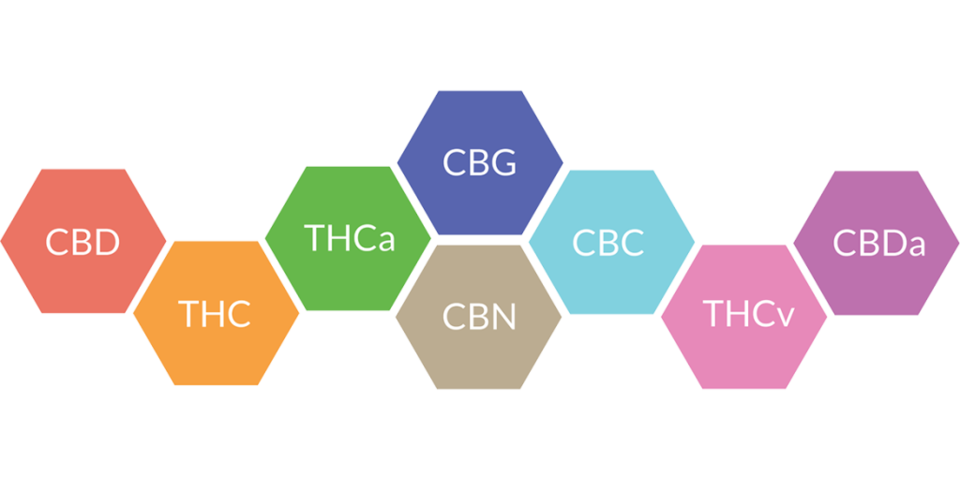The "Cannabinoid Spectrum" found in Cannabis
Cheminformatics analysis of Cannabinoids and Terpenes according to ElSohly's publication Marijuana and the Cannabinoids.

In my previous posts we had a preliminary look into informative datasets relating to the cannabinoids and terpenes found in cannabis as described by Certificates of Analysis (COAs) derived from third party cannabis testing labs.
Though a review of these datasets we were able to glean some global trends in cannabinoids and gain insight into terpene profiles of popular cannabis strains named the same.
Here, we take an academic approach to flush out and address what is often referred to as the "full spectrum of cannabinoids" or "cannabinoid spectrum". Two terms which get frequent mention but are often addressed with details lacking.
We are fortunate to stand on the shoulders of giants. Dr. ElSohly has compiled the spectrum of cannabinoids and terpenes found in cannabis in a chapter called Chemistry and Analysis of Phytocannabinoids and Other Cannabis Constituents in a publication we will return to often named Marijuana and the Cannabinoids [referenced in detail below].
Since a large number of compounds are listed (forty seven in fact) in this chapter it is a perfect opportunity for us to use cheminformatics tools and open source software to organize and display the compound relationships based on atomic similarities and differences (a topic that will be detailed in later posts). This was accomplished using the simlarity metrics from the fmcsR package available for the R programming language which uses a fragment based or Multiple Common Substructure (MCS) approach.
You may consider the cheminformatics method excessive or even pedantic for a meagre forty seven compounds that are classified and grouped nicely in the aforementioned publication.
Nonetheless, you will find that with cheminformatics will empower us to increase the scope of compounds we consider and the depth whereby we compare them.
If you don't believe me you will soon see how similarity metrics come in handy when we discuss phytocannabinoids derived from plants other than cannabis, endocannabinoids, and venture down the deep dark alley of synthetic cannabinoids.
The image you see in header of this article above is an fan cladogram derived from a distance matrix calculated using fmcsR. The relationship between the compounds shown, terpenes and cannabinoids, is based on a computational similarity algorithm that groups compounds that "fit" within each other or share a common substructure.
I will do a clade by clade analysis of these similarity trends in the next post, but merely want to introduce you to the global view first. Below is a cladogram from the same distance matrix shoing the relationships as a rooted cladogram.
In this rooted cladogram the length of the branches joining a clade visualize how similar compounds are to each other as computed by the fmcsR algorithm.
For those of you who are not satisfied with just the names of the compounds I have included a table for you to click out and view structural and detailed annotation of each compound. If you are a real keener you may have noticed I replaced the names of two compounds with "A" and "B" just to force you to click out and find out the identity.

If you are left with a feeling and want for more chemical minutia on this topic rest assured we will delve into the specific similarities and differences of each chemical grouping or clade in a future article, so stay tuned and be sure to subscribe.
References
- ElSohly, M. A. (Ed.). (2007). Marijuana and the Cannabinoids. Springer Science & Business Media.

